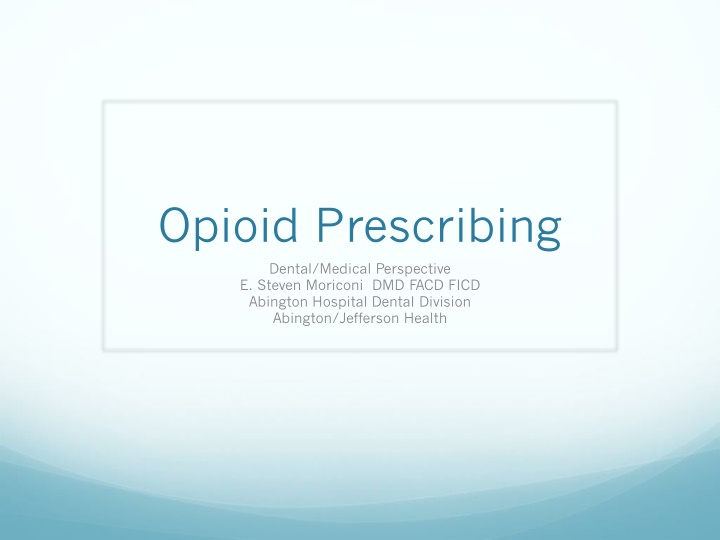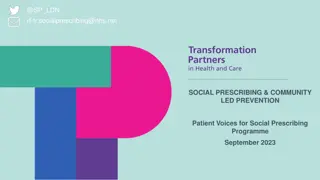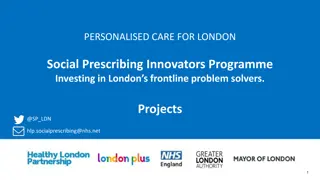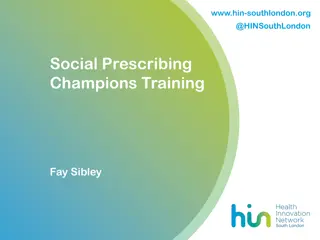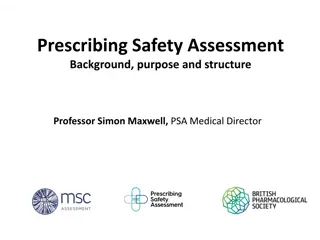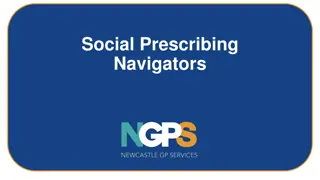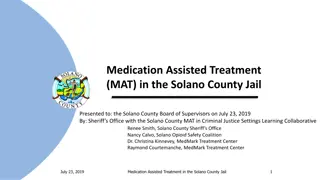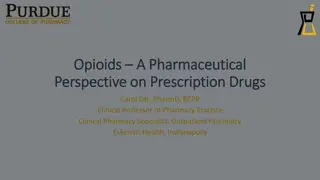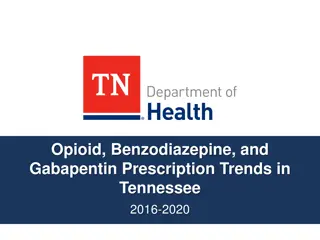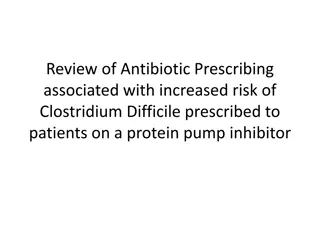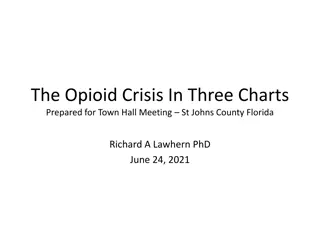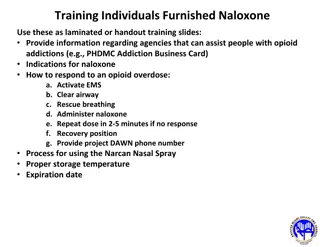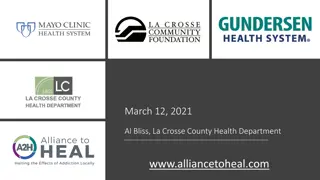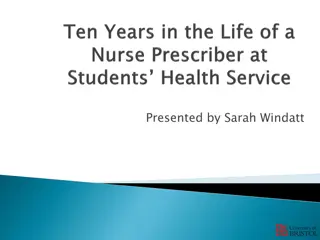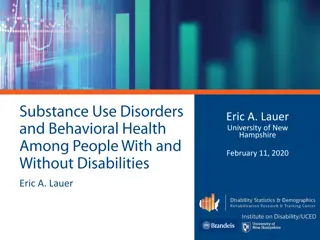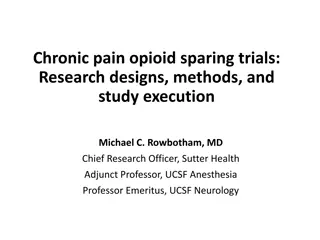Opioid Prescribing
The perspectives on opioid prescribing in dental and medical settings, emphasizing the need for responsible pain management practices and alternatives to opioids. It discusses the evolving strategies for pain management, the impact of opioid misuse on overdose deaths, and guidelines for dentists in prescribing pain medications. Additionally, it covers legislative measures such as PA Act 124 of 2016 requiring education in pain management and addiction for prescribers. Non-opioid analgesics like ibuprofen are also recommended as primary therapy for acute pain. Overall, the content provides valuable insights into promoting safe and effective pain management practices while addressing the opioid crisis.
Download Presentation

Please find below an Image/Link to download the presentation.
The content on the website is provided AS IS for your information and personal use only. It may not be sold, licensed, or shared on other websites without obtaining consent from the author.If you encounter any issues during the download, it is possible that the publisher has removed the file from their server.
You are allowed to download the files provided on this website for personal or commercial use, subject to the condition that they are used lawfully. All files are the property of their respective owners.
The content on the website is provided AS IS for your information and personal use only. It may not be sold, licensed, or shared on other websites without obtaining consent from the author.
E N D
Presentation Transcript
Opioid Prescribing Dental/Medical Perspective E. Steven Moriconi DMD FACD FICD Abington Hospital Dental Division Abington/Jefferson Health
States with Highest Overdose Deaths per 100,000 people 2015 2016 West Virginia 52 West Virginia 41.5 Ohio 39 New Hampshire 34.3 New Hampshire 39 Kentucky 29.9 Pennsylvania 37 Ohio 29.9 Kentucky 33 Rhode Island 28.2 CDC Statistics 2015-16
Overdose Deaths in Pennsylvania 2016 National average: 16.3 PA Average: 36.5 Number of deaths: 4,642`
The Evolution of Moderate/Severe Pain Management PATIENT RAPPORT PATIENT EDUCATION MANAGE EXPECTATIONS PROVIDE REASSURANCE BE AVAILABLE!
ADA Statement Dentists should consider treatment options that utilize best practices to prevent exacerbation of or relapse of opioid misuse. Dentists should consider nonsteroidal anti-inflammatory analgesics as the first-line therapy for acute pain management. Dentists should recognize multimodal pain strategies for management for acute postoperative pain as a means for sparing the need for opioid analgesics. Dentists should consider coordination with other treating doctors, including pain specialists when prescribing opioids for management of chronic orofacial pain.
PA ACT 124 OF 2016 INITIAL TRAINING AND CONTINUING EDUCATION IN PAIN MANAGEMENT, ADDICTION AND PRESCRIBING AND DISPENSING PRACTICES FOR OPIOIDS EFFECTIVE JANUARY 1, 2017, all licensees applying for the renewal of a license issued by the Board that are considered prescribers or dispensers under the ABC-MAP Act shall be required to complete at least 2 hours of Board-approved continuing education in pain management, identification of addiction or the practices of prescribing or dispensing of opioids as a condition of renewal in 2019.
Non-Opioid Analgesics Ibuprofen Action: Blocks hyperalgesia associated with tissue trauma by inhibiting COX enzymes, so that prostaglandin synthesis is affected, reducing inflammation. Max recommended dose is 3200 mg/day
Non Opioid Analgesics Acetaminophen (APAP) Has antipyretic activity but little anti-inflammatory activity No effect on bleeding Max daily recommended dose 4000 mg (liver toxicity)
Prescribing suggestions Start with 600-800mg of ibuprofen combined with 500-1000 mg acetaminophen Be aware of subjective nature of pain. Assess patient response. If above is not sufficient: Prescribe minimal amount of a narcotic eg. 4-6 Hydrocodone (Vicodin 5mg or 7.5mg/325) Re-assess and only prescribe more ONLY if you see the patient beforehand Keep in mind placebo effect and suggestion
STOP PRESCRIBING OPIATES!!
Bottom line: we are all in this together and it is only through the efforts of all of us as a group of health care, legal, community providers, therapists, families and those in recovery that we will solve this epidemic!
